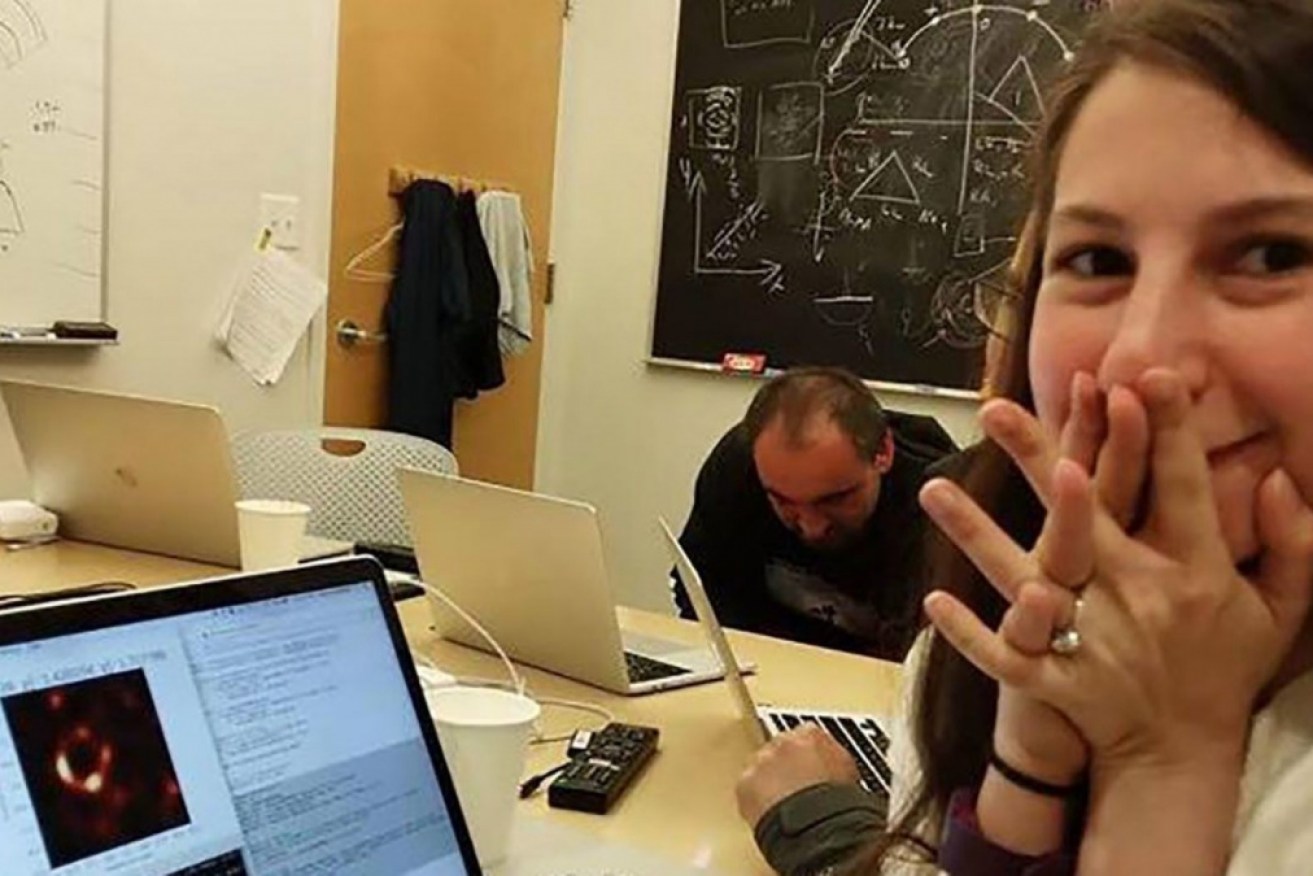Meet the woman who helped us see the world‘s first image of a black hole


American science and engineering graduate Katie Bouman has been trolled on social media. Photo: Facebook
For the first time in history, humans are now able to see the world’s first image of a black hole in space – and it’s all thanks to Katie Bouman.
The 29-year-old American graduate student shot to international fame on Wednesday after helping to create a groundbreaking algorithm that made capturing the image possible.
The black hole captured on film is located an astounding 55 million light years away in a completely different galaxy, galaxy Messier 87.
It is estimated to be three million times the size of Earth and resembles a glowing ring of fire.

The famous image of a black hole. Photo: Supplied
Up until Wednesday, the only images of a black hole in space were depicted by artists’ impressions.
That is mainly because black holes are light years away from Earth and they are usually invisible, so taking a photo of them is incredibly difficult.
But all that changed after Ms Bouman helped solve a special algorithm while she was a student at the Massachusetts Institute of Technology.
No single telescope is powerful enough to capture the black hole, so a network of eight was set up to so do using a technique called interferometry.
The algorithm has been years in the making and it allows the network of telescopes to work together to capture the image using data collected over time.
Watch Katie Bouman speak about the significance of today's black hole breakthrough: https://t.co/jufkx7nTBU (v/@nature)#KatieBouman #BlackHole #EHTBlackHole pic.twitter.com/K7dvRDpG7t
— MIT CSAIL (@MIT_CSAIL) April 11, 2019
Her new celebrity status will see her join the ranks of other pioneering female scientists such as British woman Cecilia Payne, who in 1925 discovered stars were mostly comprised of hydrogen and helium, and Polish-French astrophysicist Marie Curie, who discovered radium in 1898.
Ms Bouman has already been compared to Margaret Hamilton, a renowned mathematician and computer scientist who coined the term ‘software engineering’ while developing the navigation system for the Apollo spacecraft.
Computer scientist Katie Bouman and her awesome stack of hard drives for #EHTblackhole image data 😍 — reminds me of Margaret Hamilton and her Apollo Guidance Computer source code. 👩🏽🔬 pic.twitter.com/MgOXiDCAKi
— Flora Graham (@floragraham) April 10, 2019
What is a black hole?
A black hole is a region of space that has a gravitational field so intense and strong that nothing – not even radiation or light – can escape from it.
Black holes swallow all light and are supposed to be invisible, which makes Ms Bouman’s algorithm even more impressive.
They can, however, give off a shadow when they interact with material around them.
Interestingly, anything that ventures too close to a black hole – whether it be a star, planet or spacecraft – will be stretched and compressed in a process known as ‘spaghettification’.
Black holes can start off small, but can grow throughout their lives as they suck up gas and dust from any objects that creep too close.
Anything that passes the certain point at which escape becomes impossible will be sucked in due to a sharp increase in the strength of gravity.
That means if an astronaut floated too close to a black hole, he or she would suddenly be pulled into it like they’ve entered a whirling cosmic vacuum cleaner.
What happens once inside a black hole remains a mystery.
#KatieBouman should be trending. #WomeninSTEMAreAwesome #EHTBlackHole https://t.co/A1EZ3gHF88
— Rebecca Bollwitt (@Miss604) April 10, 2019








